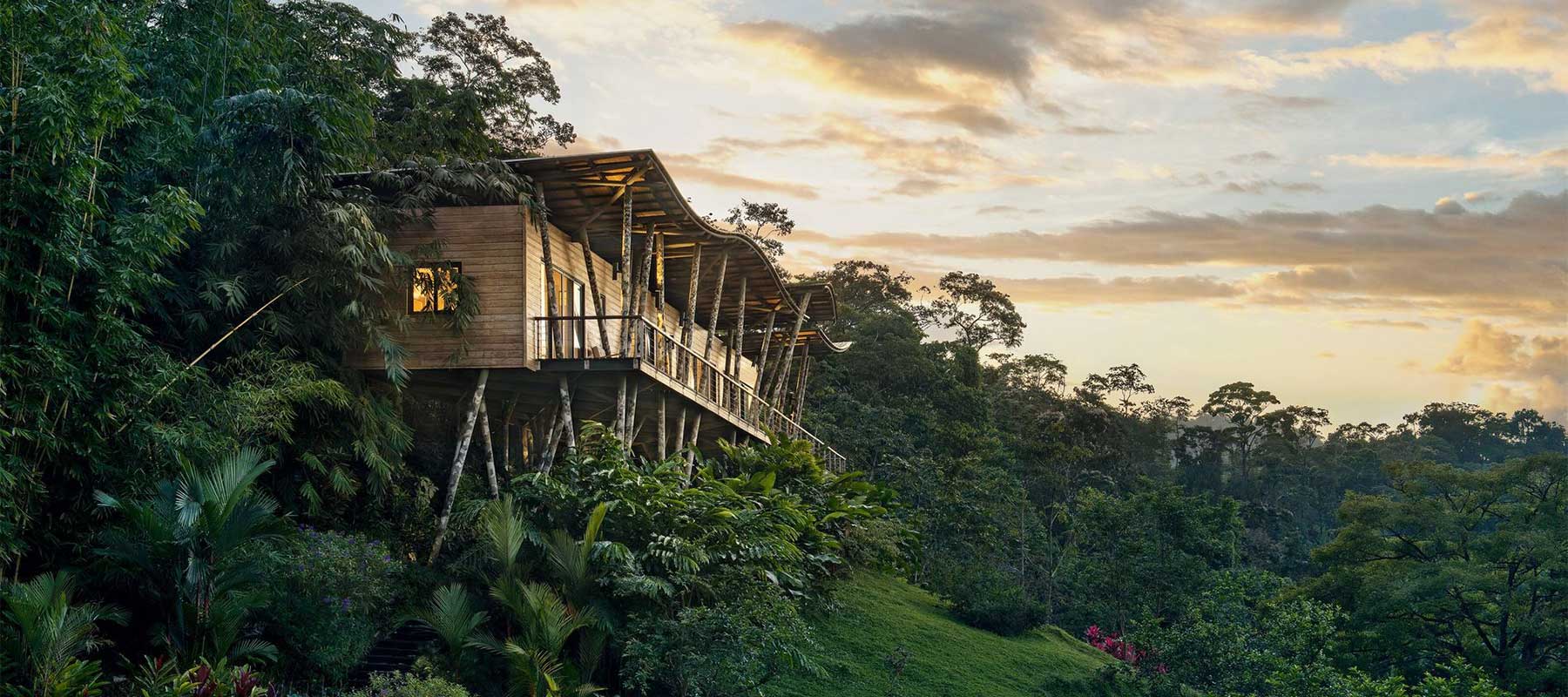
Places to Stay
In Costa Rica, I Visited a Brand-New Jungle Lodge.
a
by Rolf Potts
26-06-2024

Places to Stay
a
by Rolf Potts
26-06-2024
I was on a yoga platform in the shade of Origins Lodge (villas from $750), in the northern cloud forest of Costa Rica, just hours after touching down. Observing the dramatic unfolding around me, I followed my teacher Manuel Guevara through downward dog and warriors. The sky transformed from blue to clouds, drizzle, and the gentle rumble of faraway thunder; yet, the sun came out again moments later.
A yellow-breasted toucan popped out from behind some trees, lime-green parrots swooped by, and small poison dart frogs chirped from somewhere in the jungle. Concentrating on this whirlwind of activity helped my chaotic worries about flight connections, impending deadlines, and family responsibilities go away like rain.
Costa Rica is home to six percent of the world's biodiversity and more than a quarter of its landscapes are protected, so I knew I wanted to go there for a break from my usual routine so I could experience moments like these. Six hillside lodges and the three-bedroom Villa Vertigo make up Origins, one of the newest properties from the South African-based Mantis resort family. The 111 acres of primary rainforest were like being in the middle of a symphony of howler monkeys, birds, and amphibians as I explored them.
No air conditioning was required even in my spacious villa, with its high bamboo ceilings and gauze-shaded bed, because the constant breezes kept me cool. As I soaked in my outdoor shower fashioned from volcanic stone from the area, I used bath products infused with the aroma of ylang-ylang flowers that I had grown on the site. Listening to birdsong and taking in views that extended all the way to neighboring Nicaragua, I spent an afternoon on my balcony next to a private plunge pool that was heated by a woodstove.
The sensation of having this verdant landscape—with all of its noises, sights, and tastes—to oneself was one of the most opulent aspects of my stay at Origins. While riding my horse, I waved to the farmers tending to their tiny pieces of land adjacent to the property and took in the verdant hills that seemed to stretch on forever.
While eating my bread with jam prepared from locally produced arazá fruit at El Salto Restaurant every morning, I could look out over the perfect rainforest that provided the ingredients. The restaurant uses ingredients that are either grown in their organic garden or found in nature. The coffee, which came from a local artisan, was steeped for me using a traditional chorreador, which consists of a wooden stand, a cloth bag for the coffee grains, and a pot of boiling water. The coffee was flavorful and aromatic.
On our morning nature walk, Pablo, my guide, and I saw a baby sloth clambering down a tree branch just outside the lodge. As we continued our walk, we passed fresh ocelot tracks and eventually reached a waterfall and a kapok tree that was hundreds of years old. The guanabana, sometimes known as soursop, was ripe when we found it. We returned to the lodge with the guanabana, planning to have it for breakfast the following day.
I watched as Pablo bent down and let one crawl onto his index finger as we approached a swarm of bullet ants, which are known for having the most excruciating insect sting in the world. As the ant crawled from his finger to his wrist, he described the sensation as "pain going up your arm" when biting a finger. Things here aren't usually out to get you, though. Peace is all they desire.
While we were out on our night walk later that evening—when the jungle is at its most active—Pablo's comments popped into my head. Out of nowhere, a frog leaped at me and bounced off my upper leg as we strode into the pitch-black night, our lone flashlights lighting our way as we sought out slumbering birds and serpents. An uncontrollable squeal escaped me. As the amphibian proceeded about its day, I soon understood that I was the one obstructing its path—an outsider in its own environment. I composed myself, whispered "excuse me," and persisted along the trail that was teeming with wildlife.